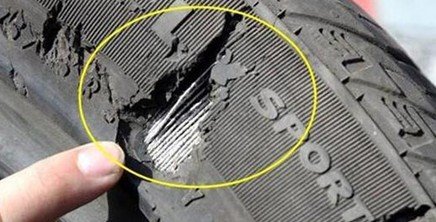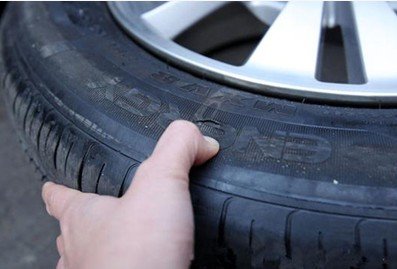Tire bulging is one of the most important factors that can lead to a blowout.
Why Do Tires Bulge?
Tire bulging is caused by the breaking of the tire's ply cords (also known as the cord or fabric layer).
The sidewall of the tire is supported by nylon cords. If several of these cords break simultaneously, the area will be left with only rubber for support, and the tire will quickly develop a bulge.

What Causes Ply Cord Breakage?
Ply cord breakage occurs when a tire is subjected to external forces. Common causes include:
Sidewall Compression: For example, when a tire hits a curb, it can compress the sidewall.
Impact from Speed Bumps or Large Potholes: If the vehicle doesn't slow down when passing over speed bumps or deep potholes, the tire receives a violent impact, and the sidewall bears excessive force.
Low Tire Pressure: When the tire pressure is too low, the sidewall deforms excessively and repeatedly bends, causing the ply cords to fatigue and break.
Whether it's a bulge or damage to the sidewall, it cannot be repaired or patched.
Once the ply layer has been damaged, patching the tire only involves placing a rubber piece inside, which cannot restore the integrity of the ply layer. Therefore, after some time, the area where the tire was patched may develop a bulge again, potentially leading to a blowout. This is a serious safety hazard.

Additionally, during driving, the sidewall of the tire constantly deforms and recovers. Patches can easily come off under such conditions.
Remember to Check the Tire Sidewalls
When inspecting your vehicle, don't forget to check the tire sidewalls.
If you find a bulge in the tire, it should no longer be used and must be replaced immediately.
If the bulge is small, you can carefully drive the vehicle at low speeds to a tire shop for replacement, but avoid using the tire for long-distance or high-speed driving.



